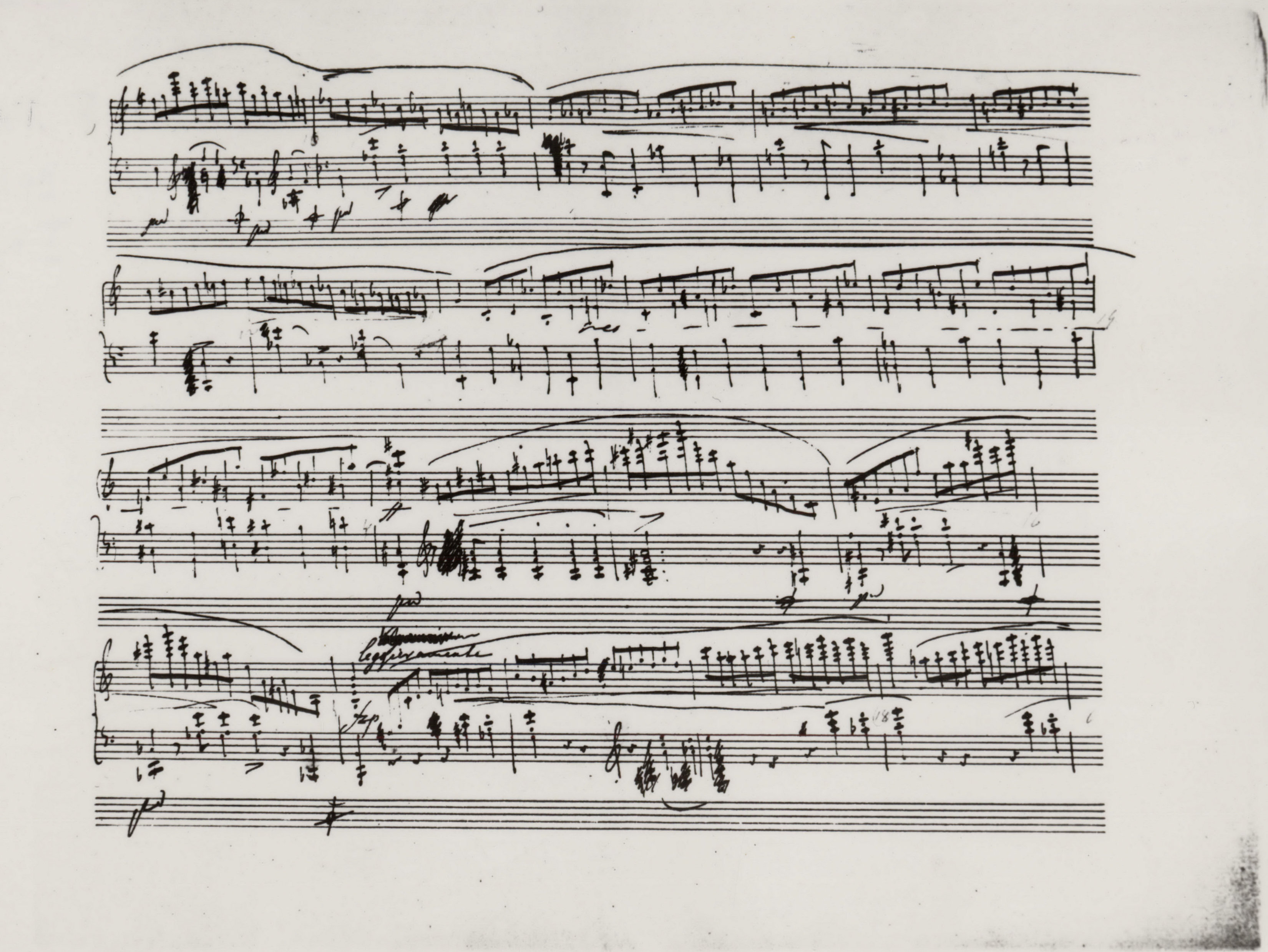Op. 2, Variations in B♭ major
Op. 10, 12 Etudes
Op. 11, Concerto in E minor
Op. 21, Concerto in F minor
Op. 22, Polonaise in E♭ major
Op. 24, 4 Mazurkas
Op. 25, 12 Etudes
Op. 26, 2 Polonaises
Op. 27, 2 Nocturnes
Op. 28, 24 Preludes
Op. 30, 4 Mazurkas
Op. 35, Sonata in B♭ minor
Op. 50, 3 Mazurkas
Op. 63, 3 Mazurkas
Op. 64, 3 Waltzes
(Op. 4), Sonata in C minor




Op. 23, Ballade in G minor
Under these three L.H. chords, one can see deletions in A; however, they allow us to decipher the deleted text – the same chords written down an octave lower. According to us, it did not necessarily have to be the initial version but a mistake – a bar earlier, an identical motif is written down in the bass clef; while writing the same chords in the treble clef, Chopin could have had the impression that the very change of clef assured the transfer of the notes an octave higher. Cf. a similar situation in the Scherzo in C minor, Op. 39, b. 345-347. Interestingly, traces of an identical correction introduced in print are also visible in FE. The only possible explanation would involve Chopin having introduced the correction into A after FE1 had already been engraver, e.g. while proofreading this edition. Did Chopin want to 'erase all evidence' of his (possible) mistake? It could have been distraction – while comparing two texts of the Ballade in search for mistakes, A and the proof copy of FE1, Chopin could have discovered his mistake when looking at A and automatically corrected it there; afterwards, he would mark the change in the printed text. Cf. a similar situation in b. 171.
minor, Op. 39, b. 345-347. Interestingly, traces of an identical correction introduced in print are also visible in FE. The only possible explanation would involve Chopin having introduced the correction into A after FE1 had already been engraver, e.g. while proofreading this edition. Did Chopin want to 'erase all evidence' of his (possible) mistake? It could have been distraction – while comparing two texts of the Ballade in search for mistakes, A and the proof copy of FE1, Chopin could have discovered his mistake when looking at A and automatically corrected it there; afterwards, he would mark the change in the printed text. Cf. a similar situation in b. 171.
Compare the passage in the sources »
category imprint: Corrections & alterations; Source & stylistic information
issues: Corrections in A, Deletions in A, Authentic corrections of FE, Bass register changes
notation: Pitch

